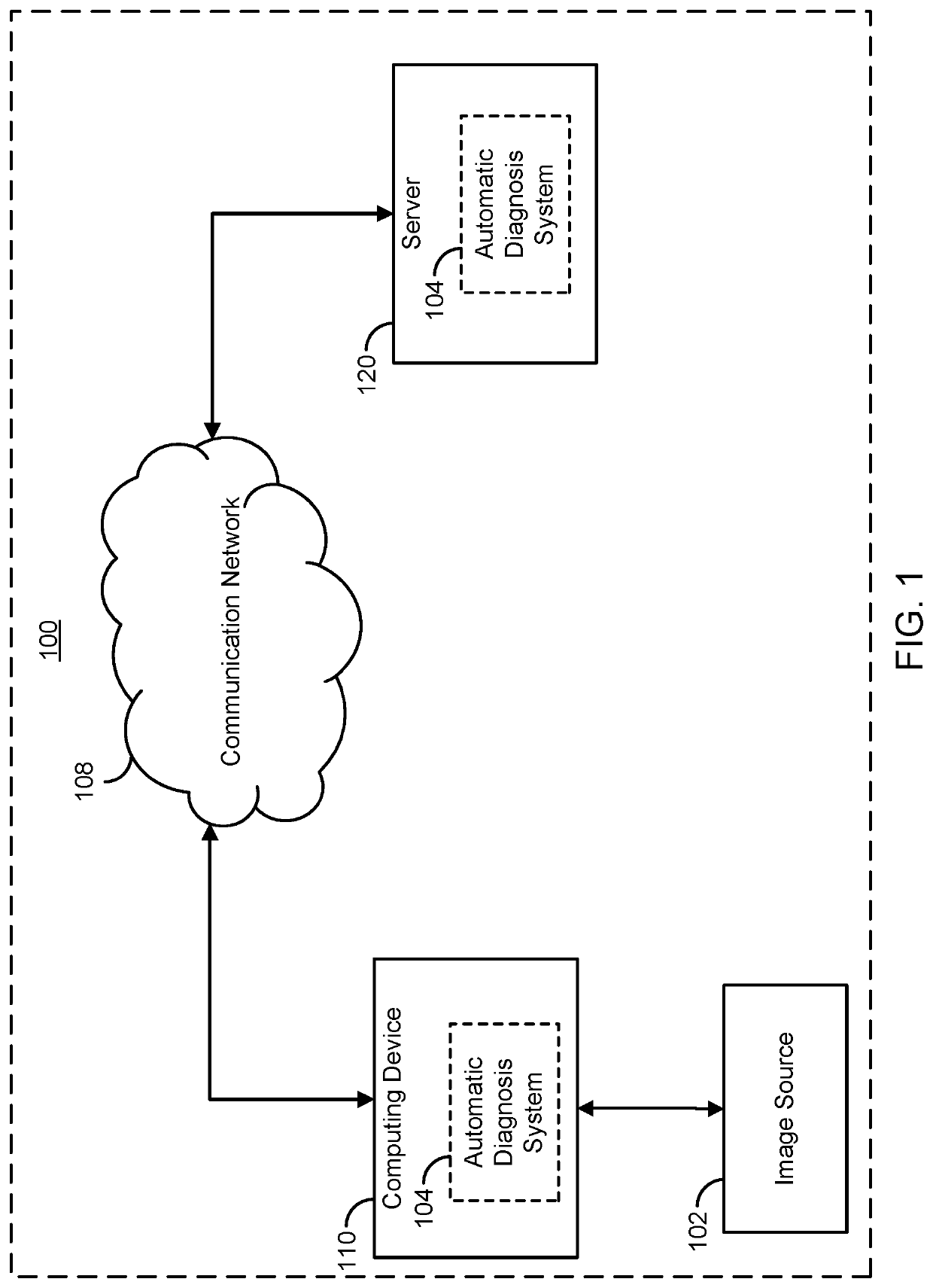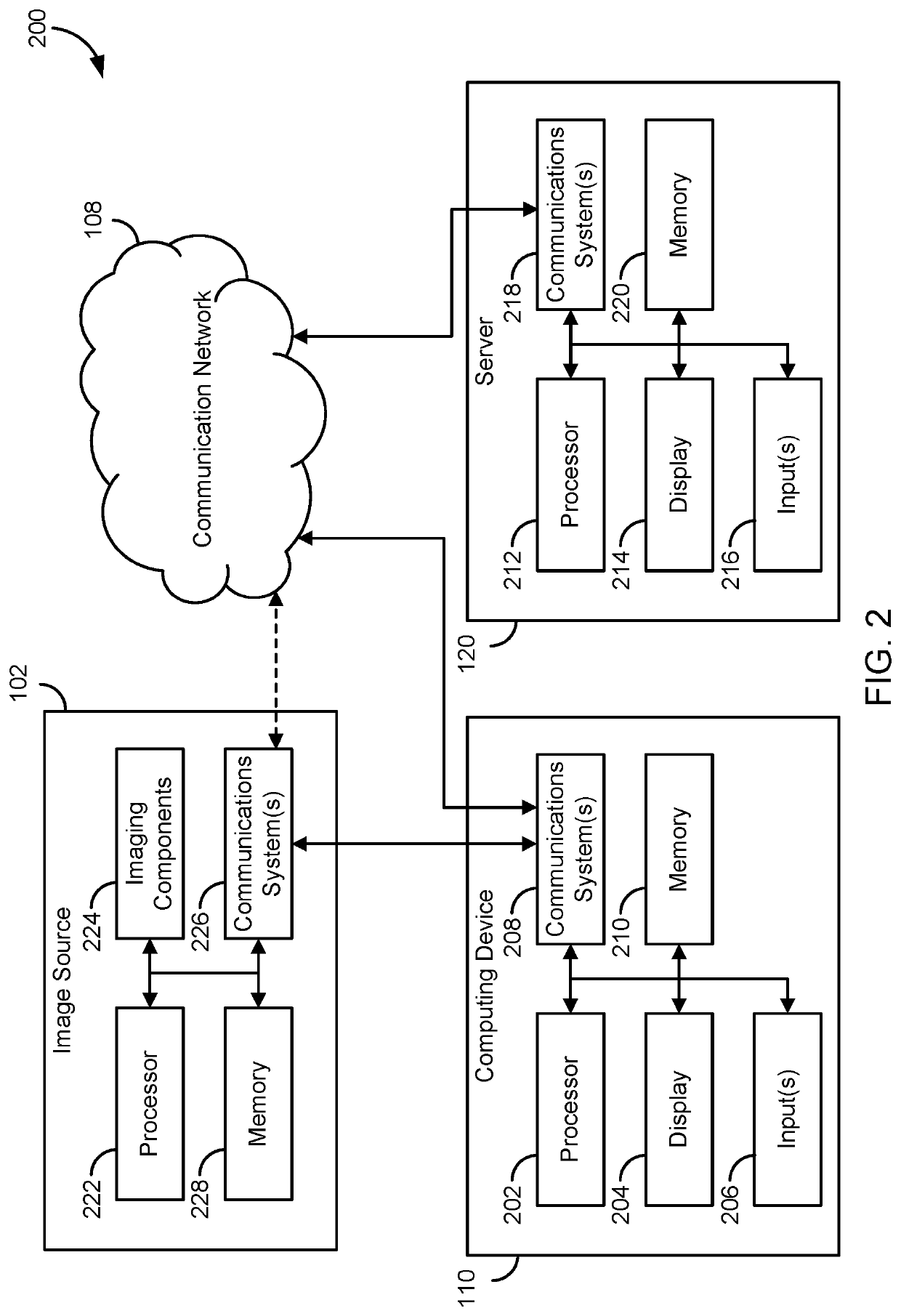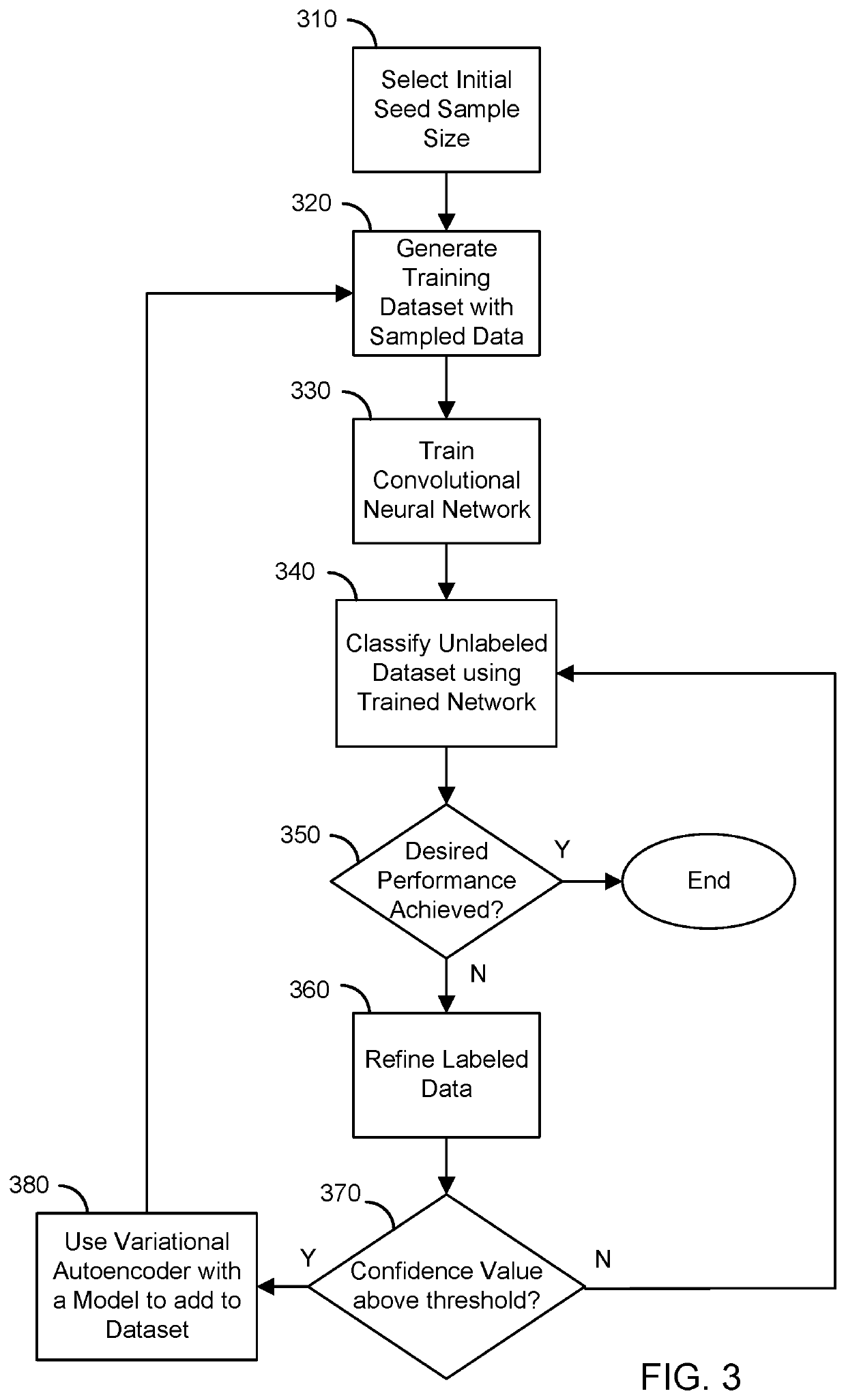A system and method for automated labeling and annotating unstructured medical datasets
a medical dataset and automated labeling technology, applied in healthcare informatics, instruments, computing models, etc., can solve the problems of increasing the demand for diagnostic imaging, increasing the risk of human error and delayed diagnosis, and remaining limited, and the labeling requirement is inherently difficult to m
- Summary
- Abstract
- Description
- Claims
- Application Information
AI Technical Summary
Benefits of technology
Problems solved by technology
Method used
Image
Examples
Embodiment Construction
[0028]The present disclosure provides systems and method for supervised and unsupervised learning schemes that may be used to automatically label medical images for use in deep learning applications. Large labeled datasets may be generated from a small initial training set using an iterative snowball sampling scheme. A machine learning powered automatic organ classifier for imaging datasets, such as CT datasets, with a deep convolutional neural network (CNN) followed by an organ dose calculation is also provided. This technique can be used for patient-specific organ dose estimation since the locations and sizes of organs for each patient can be calculated independently.
[0029]In one configuration, a desired classification accuracy may be achieved with a minimal labeling process. Using an iterative snowball sampling approach, a large medical image dataset may be annotated automatically with a smaller training subset. The automatic labeling system may include a variational autoencoder ...
PUM
 Login to View More
Login to View More Abstract
Description
Claims
Application Information
 Login to View More
Login to View More - R&D
- Intellectual Property
- Life Sciences
- Materials
- Tech Scout
- Unparalleled Data Quality
- Higher Quality Content
- 60% Fewer Hallucinations
Browse by: Latest US Patents, China's latest patents, Technical Efficacy Thesaurus, Application Domain, Technology Topic, Popular Technical Reports.
© 2025 PatSnap. All rights reserved.Legal|Privacy policy|Modern Slavery Act Transparency Statement|Sitemap|About US| Contact US: help@patsnap.com



